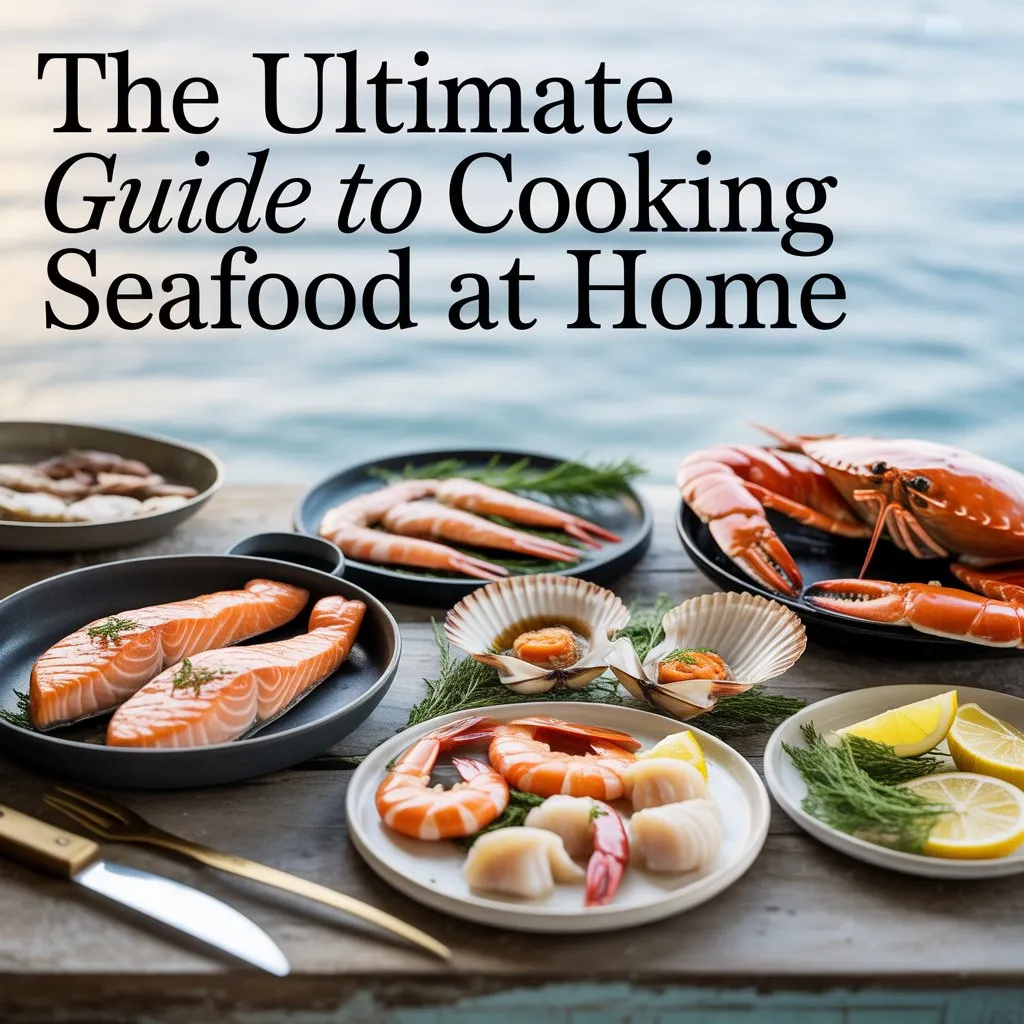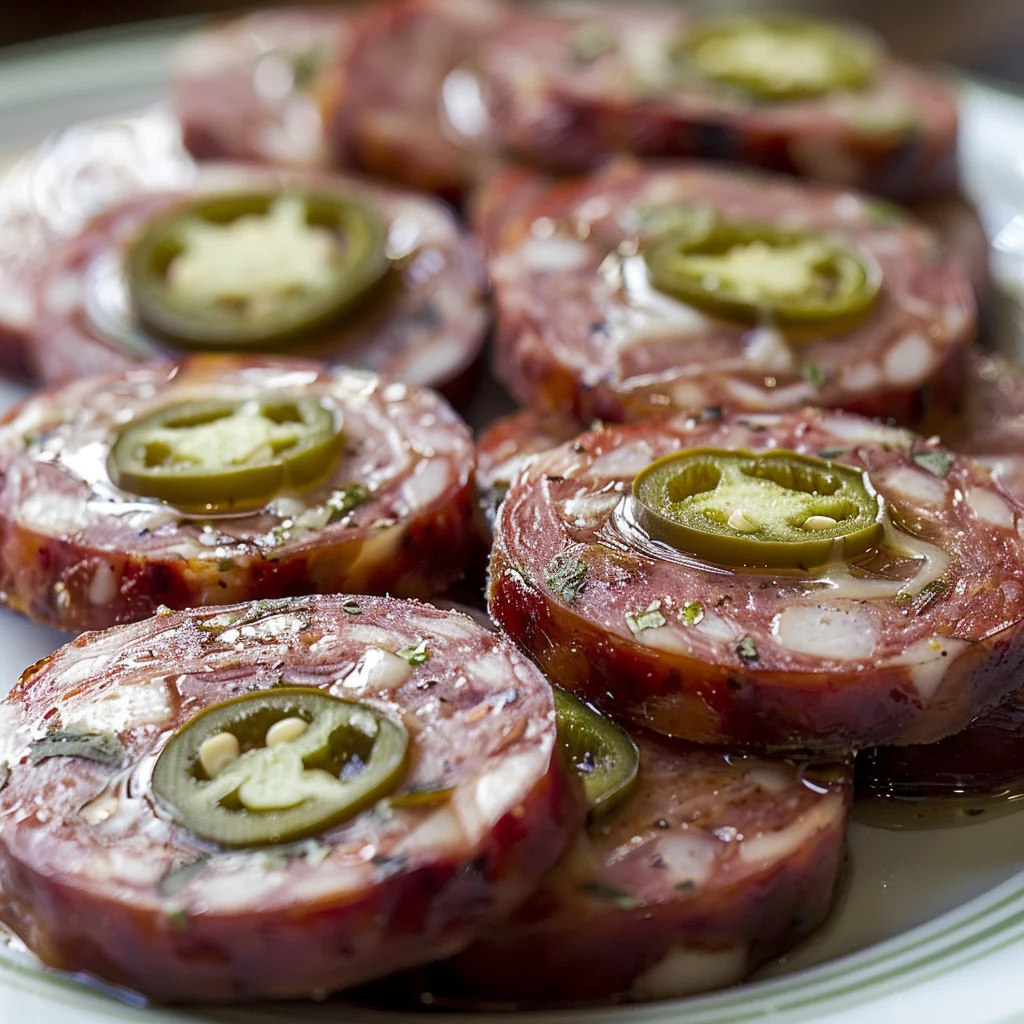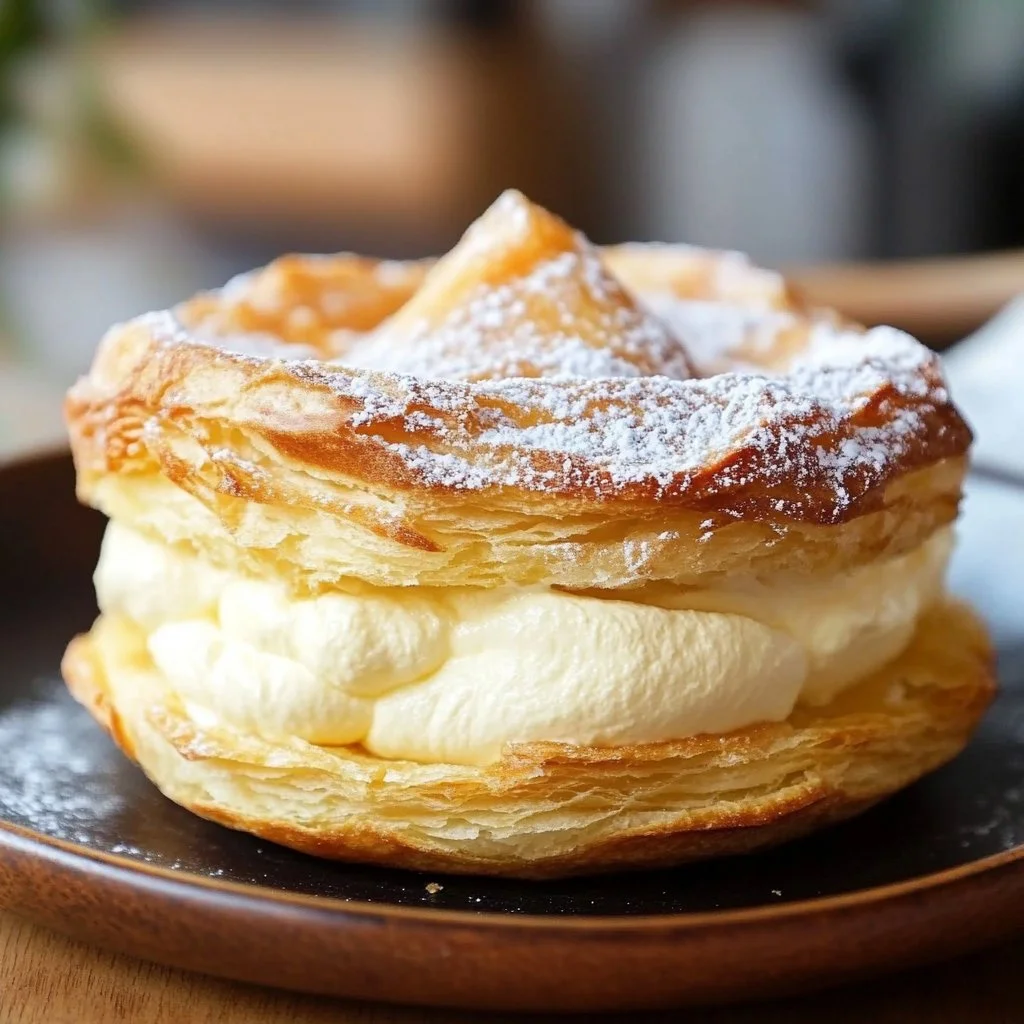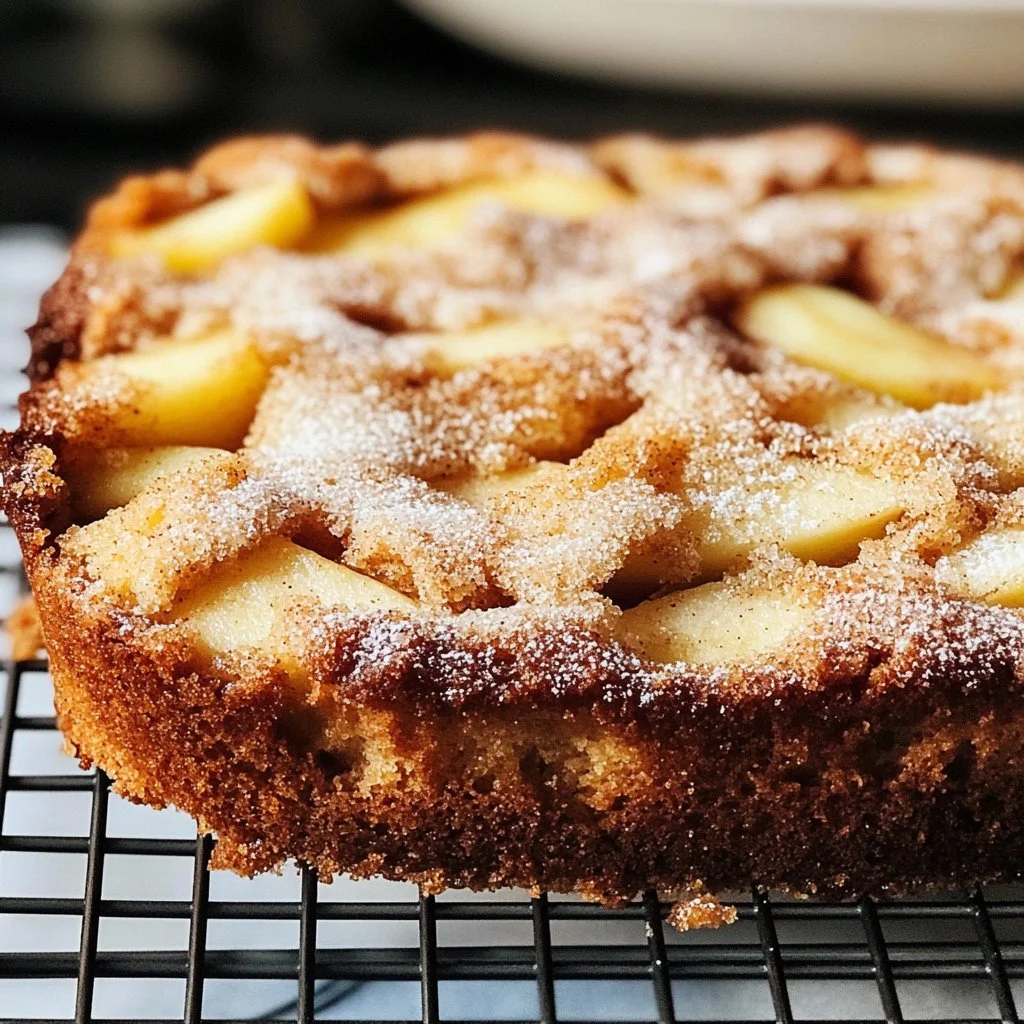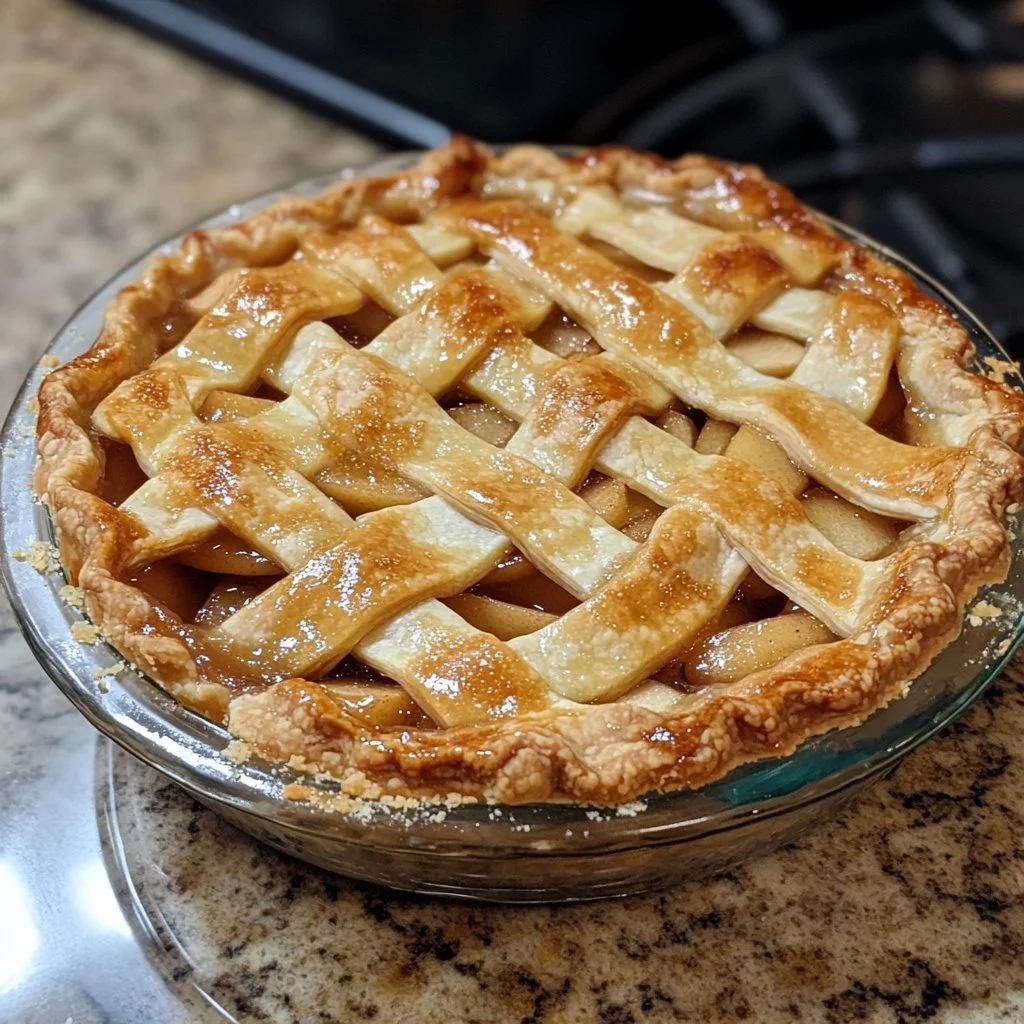➤ Table of Contents
Steering clear of the pitfalls of a soggy pasta salad is like navigating a culinary challenge many of us face when aiming for that perfect dish. With a mosaic of flavors and textures, this ultimate pasta salad guide is set to redefine your homemade seafood Alfredo pasta experience. While ready-made options might save time, they often lack the finesse of a well-crafted dish, leaving pasta salad calories and quality on the table. In this article, we’ll embark on a culinary journey, transforming simple ingredients into an indulgent Creamy Salmon Alfredo that’s miles away from the predictable packaged pasta salads you may be accustomed to. Keep reading to learn how to weave together savory salmon, a velvety sauce, and perfectly al dente pasta into a refined ensemble that promises to delight your palate.
Seafood Alfredo Pasta With Salmon, Key Takeaways
- Quality salmon and meticulous seasoning elevate the creamy pasta dish
- Proper technique ensures a silky and stable Alfredo sauce
- Thoughtful pasta selection is crucial for texture and sauce pairing
- Dietary adaptations like gluten-free and dairy-free options can still offer indulgence
- Wine pairing accentuates the dish’s flavors when chosen correctly
How to Make Creamy Salmon Alfredo Pasta

Embarking on the culinary journey of fusing tender salmon with a delectable Alfredo sauce, begins with choosing the finest fish that the sea has offered up. When it comes to pasta salad calories, the quality of your core ingredient – the salmon – can elevate a simple dish to an extraordinary one. With a carefully curated list of packaged pasta salads at your fingertips, you’ll be well-prepared to create a dish that exudes taste and a comforting creaminess with every forkful. I’ll guide you through a methodical approach to crafting this creamy seafood splendor, ensuring the seasoning harmonizes with the natural flavors whilst managing heat to achieve that perfect texture. I’ve honed a selection of expert tips to enrich the sauce to its creamiest potential. And to round out the meal, I’ll share insight on pasta salad pairings that complement the main course splendidly, maximizing your pasta salad shelf life, and maintaining the integrity of this classic dish. Welcome to your next favorite dinner, infused with flavor and finesse. avoiding soggy pasta salad
⚡ Smart Kitchen Tools Every Home Cook Swears By

- Instant-read accuracy
- Backlit display for night grilling
- Waterproof & ultra-fast probe

- 17 smart cooking presets
- XL 10L family capacity
- Roast, bake, fry & dehydrate

- 3 sizes for every recipe
- Pre-seasoned & durable cast iron
- Oven & grill ready
Selecting the Best Salmon for Your Pasta
Embarking on the creation of a luscious Salmon Alfredo Pasta, the choice of salmon is as crucial as the quality of cream used in the sauce. I always search for a fillet that’s fresh, robust in color, and that springs back to the touch, ensuring that each bite will meld seamlessly with the velvety Alfredo base ultimate pasta salad guide. The richer the salmon’s natural oils, the more harmoniously it will complement the blend of cream and cheese in the final dish.
Preparing salmon properly involves more than just a quick rinse under water; it’s a delicate process that can make or break the texture of your pasta accompaniment. I take great care to pat the fish dry, which helps in achieving that perfectly seared crust that will contrast with the dish’s creamy elements. I also ensure that it’s free of bones and skin, allowing the succulent flesh to absorb the subtle notes of cheese and black pepper.
The seasoning of salmon can transform it from simple to sublime. I favor a judicious seasoning, letting the natural flavor of the salmon shine through while enhancing it with just the right amount of black pepper and salt. After all, when it swims together with a sauce rich in cream and cheese, it’s the balance of flavors that guides the palate to the heights of culinary bliss.
Ingredients You’ll Need
Gathering the ingredients for this recipe begins with the heart of the dish – smoked salmon. Its delicate smokiness imparts a depth of flavor that simply cannot be mimicked. Paying close attention to the quality of smoked salmon you select will be pivotal in crafting a dish that stands out with its gourmet flair.
The pasta choice is another key player, with fettuccine serving as the ideal canvas for our Alfredo sauce’s creamy caress. Its broad, flat ribbons are perfect for entwining with our rich sauce and tender salmon chunks, ensuring each forkful is as satisfying as the last.
To build the sauce’s famously smooth and velvety texture, I always reach for high-quality butter, which not only enriches the Alfredo base but also carries the other flavors harmoniously throughout the dish. A pinch of salt is my go-to for accentuating these flavors, establishing a well-rounded taste that elevates the combination of pasta, smoked salmon, and delicate sauce to new culinary heights.
Step-by-Step Cooking Instructions
Initiating the cooking process: I bring a large pot of salted water to a roaring boil, readying it for the fettuccine alfredo’s foundation. Ensuring the pasta is cooked al dente is pivotal; overcooking would result in a lackluster texture that fails to stand up to the creamy sauce. I diligently stir the pasta throughout its boiling journey to prevent sticking, setting the stage for its union with the rich Alfredo sauce.
Transitioning to the sauce, I melt butter over medium heat in a saucepan, stirring consistently to avoid burning. As the butter reaches a gentle simmer, I incorporate heavy cream slowly, keeping an eye on the consistency as I whisk. The key here is patience; a hurried sauce can lead to separation, while a carefully tempered mixture guarantees a smooth canvas for the parmesan, which will effortlessly melt into a velvety Alfredo emulsion.
After achieving the perfect creaminess in the sauce, I focus on the pièce de résistance: the salmon. I gently lay the seasoned fillets into a hot pan where they sizzle and start smoking. The aroma of the cooking salmon fills the kitchen, its edges crisping to a golden hue under my vigilant gaze. With each turn, the fish grows ever more succulent, primed to flake into our pasta and sauce, completing the culinary masterpiece.
Expert Tips for a Perfect Sauce
To achieve the zenith of flavor in your Alfredo sauce, a squeeze of fresh lemon can be transformative. Just a whisper of its zest brightens the palate, cutting through the richness of the fat and lending a refreshing note that sings in harmony with the creaminess of the dish.
When building the foundation of the sauce, I usually sauté minced garlic until it’s fragrant, taking caution to not let it brown too much. This small step infuses the fat with a mellow, nutty garlic flavor that permeates the entire sauce, inviting a subtlety that compliments the robust taste of salmon.
🥗 Fresh, Fast & Foolproof — Upgrades You'll Use Tonight

- Zoodles in seconds
- Heavy-duty, 10 sharp blades
- Keto, paleo & gluten-free friendly

- Meals in ~30 minutes
- 3-Qt — perfect for 1–3 people
- Pressure cook, sauté, steam & more

- Phone alerts & live temp graph
- Hands-off monitoring for smokers
- Perfect doneness, every time
A dash of thyme adds an earthy undertone, marrying well with the seafood notes, and a tiny amount of flour can serve to stabilize the emulsion—that exquisite amalgam of cream, cheese, and butter—resulting in a sauce that clings lovingly to each fettuccine ribbon and flaked piece of salmon.
Serving Suggestions
To bring out the best in this velvety seafood creation, I opt for a garnish of freshly chopped parsley scattered atop the pasta just before serving; the vibrant green adds a pop of color and a burst of freshness that complements the dish beautifully. The simplicty of parsley is not to be underestimated—in a single sprinkle, it breathes new life into the creamy pasta, an echo of finesse on the plate.
Before I set the table, there’s something about the gentle, warm glow of a baking dish coming straight from the oven that elevates the ambiance. Even without utilizing baking for the pasta itself, serving accompaniments like a crusty garlic bread straight from the oven alongside the pasta always seems to enhance the sensory experience, encompassing touch, taste, and smell.
Pairing the rich and creamy pasta with a light and zesty salad adds balance to the meal; just a teaspoon of a bright vinaigrette can mitigate the indulgence of the sauce. I find the contrast between the warm, comforting pasta and the cool, crisp greens to be a harmonious combination, one that makes for a well-rounded dining experience, as I gently toss the salad in a glass bowl, ready to serve beside the sizzling frying pan of salmon.
The Secret to a Perfect Creamy Alfredo Sauce

Diving into the heart of a luxurious Creamy Seafood Alfredo Pasta, a tantalizing Alfredo sauce is the pillar that holds this culinary creation aloft. Whether accompanying chicken or enhancing the delicate flavors of salmon, the Alfredo sauce is a marvel of simplicity and taste. Curating the essential ingredients – a few tablespoons of rich butter, the silkiest of creams, and the finest grated Parmesan cheese – forms the crux of turning a simple noodle dish into a memorable dining experience. In my kitchen, the quest for the perfect consistency is an exercise in precision, a balance between heat and timing to avoid the common pitfalls of a sauce too thick or too runny. Delving further, infusing this base with indulgent flavors such as a hint of garlic or a trickle of olive oil, all while maintaining vigilant stirring, transforms a good sauce into an extraordinary one that coats each individual strand of fettuccine in a velvety embrace.
Essential Ingredients for Alfredo Sauce
At the core of a luscious Alfredo sauce lies a trinity of essentials: high-caliber butter, cream, and Parmesan cheese. Yet, to truly bring the dish to life, I often add a dash of spice that lends an understated heat, whisking it into the mix without overshadowing the main ingredients. This detail is subtle, yet pivotal in achieving a depth of flavor that marries splendidly with the gentle sweetness of the cream.
A drizzle of quality olive oil can be the difference between a good sauce and a great one. It introduces a velvety texture and a hint of fruitiness that complements the dairy components exceptionally well. As a personal trick, I incorporate it right after the sauce begins to thicken, giving it that final flourish before it’s ready to caress the spaghetti or fettuccine resting warmly on my plate.
Lastly, starch is an unsung hero often overlooked in the construction of an impeccable Alfredo sauce. Whether it’s a sprinkle of flour or the residual pasta water, this humble element acts as a binder, ensuring that the sauce coats the pasta evenly instead of sliding off. I mindfully stir in just enough of the starchy water to achieve the silkiness required, always keeping an eye on the consistency to prevent any clumps, ensuring a smooth sauce that envelops the pasta like a soft blanket, ready to be savored directly from the stove or after a quick gratin under the oven’s broiler for that delectable golden top.
Achieving the Right Consistency
Achieving the right consistency in your Alfredo sauce is an art that marries careful cooking technique with an understanding of nutrition. It’s about more than just flavor; it’s crucial to know how each ingredient, from the rich creams to the robust tomato, contributes not only to the taste but also the body of the sauce. Italy’s finest chefs understand this balance, creating sauces that leave a lasting impression both on the palate and the plate.
As I gradually blend the ingredients, my attention to detail sharpens, focusing on the viscosity that makes or breaks a dish’s allure. A judicious addition of salt and pepper is all it takes to enhance the multi-layered profile of the sauce, encouraging the flavors to emerge robustly, without overwhelming the delicate chemistry at play.
The final step I treasure is the act of simmering, a process that requires both patience and precision. Here, the sauce begins to reveal its true character — a harmony between the silken cream and the mellow acidity of tomato, a blend achieved through the controlled application of heat that coaxes out every nuance while sculpting a consistency that’s neither too thick nor too runny.
Flavor Enhancements for Your Sauce
In striving for a sauce that embodies perfection, the infusion of fresh dill can be striking, especially when paired with fillets of salmon. The aromatic herb introduces a layer of complexity and pairs exquisitely with the creaminess of the sauce, invoking the classic flavors often found in fish dishes.
Introducing shrimp into the Alfredo tapestry not only incorporates a delightful seafood twist but also contributes a certain sweetness that complements the savory richness of the sauce. A quick sauté before they join the simmering pot is all it takes to unlock their fullest potential, amplifying the oceanic essence of the dish.
Allowing the combined flavors of fresh fish and refined spices to gently boil together creates an interaction that heightens the depth of the Alfredo sauce. The delicate process of simmering melds the natural succulence of the seafood with the creamy foundation, producing a harmonious burst of taste with each spoonful.
Best Types of Pasta to Use With Salmon Alfredo

Pasta selection is a pivotal aspect of crafting a sublime Creamy Seafood Alfredo Pasta with Salmon, as it serves as the vessel that carries the rich flavors of the dish. Navigating through the various shapes available, one quickly learns that not all pastas are created equal when paired with creamy sauces and tender salmon. The ideal pasta should cradle the sauce, enhancing its texture and allowing the succulent salmon to shine. The inclusion of other ingredients like sweet peas, robust vegetables, and fresh herbs like spinach demands a pasta that complements their textures and flavors rather than competing with them. One also seeks the comfort in a pasta that retains firmness, achieved through mastering the art of cooking it to the perfect al dente – tender yet firm to the bite. And in this fusion of flavors, the role of pasta is not just to fill but to harmonize the seafood’s subtlety with the indulgence of infused cream cheese and other ingredients, culminating in a dish where pasta is not a mere backdrop but a co-star in this culinary performance.
Why Pasta Choice Matters
In the symphony of flavors that is Creamy Seafood Alfredo Pasta with Salmon, the role of the pasta is more than a mere base; it’s a crucial player. The right type of pasta doesn’t just hold the sauce; it accentuates the delicate seafood, harmonizes with vegetables like broccoli, and carries the essence of the dish in both taste and presentation. A thoughtful choice in pasta ensures that the garnish and core ingredients maintain their integrity, whether served fresh or as savory leftovers.
Consider the texture and shape when pairing pasta with creamy sauces and succulent pieces of salmon. The goal is to achieve a culinary match where each noodle type enhances the seafood experience, capturing the sauce and the essence of the lemon juice used to lift the dish’s overall flavor profile. A well-chosen pasta means each bite is as satisfying as the next, carrying the velvety sauce and complementing the richness of the salmon.
Leftovers are a testament to a pasta dish’s ongoing appeal, and the right pasta choice ensures that the dish remains enticing, even the next day. The choice of pasta influences how well the meal reheats, with an aim to retain the luscious creaminess of the Alfredo sauce while preventing seafood like salmon from becoming overcooked. Plus, the right pasta structure can withstand the microwave or stovetop reheating, ensuring that pairings like tender broccoli florets keep their vibrant color and satisfying crunch.
- Selecting the ideal pasta shapes to complement the creaminess of Alfredo and the tenderness of salmon.
- Ensuring that the chosen pasta pairs well with the acidity of lemon juice and the freshness of assorted garnishes.
- Choosing pasta that maintains its texture and appeal, providing the perfect culinary experience for both fresh servings and leftovers.
Recommended Pasta Shapes
Fettuccine reigns supreme when it comes to cradling the luxurious sauce, its flat and broad shape serving as the ideal host for the creamy embrace of Alfredo. Its capacity to hold sauce echoes a culinary truth: a judicious choice in pasta enhances the fusion of saturated fat from the sauce with the lean protein of the salmon. Choosing the wrong shape could leave you with a dish where the sauce pools at the bottom, separate from the pasta’s embrace.
For those who favor a hearty fare, rigatoni can also be an excellent conduit for this seafood delight. Its robust texture stands up to the rich sauce without becoming overly saturated while the grooves trap bits of clove and finely grated cheese, delivering a burst of flavor with each bite. Additionally, the substantial size of rigatoni makes it satisfying, ensuring that the dish remains filling, yet balanced in flavor.
Lastly, penne’s versatility makes it a culinary chameleon in the world of pasta, befitting not just a simple soup but also our cream-laden, salmon-rich sauce. The tubes capture pockets of Alfredo, allowing the harmony of olive-infused oil and salmon to be savored in perfect proportion. Its design ensures even distribution of heat, which keeps the protein succulent and prevents the saturated fat in the sauce from separating.
Cooking Pasta to the Perfect Al Dente
The journey to the perfect al dente pasta begins the moment the water boils: timing is everything. A classic fettuccine, when timed precisely, harmonizes with the delicate salmon and embraces the Alfredo sauce, enhancing the dish with a foundation of just the right firmness. While I stir the strands, I infuse the water with a sprig of basil, subtly layering an additional note of freshness into the pasta itself.
As the pasta nears its ideal al dente state, I prepare for the finishing touches. A quick sauté of fresh asparagus adds both a crisp texture and a vibrant green that not only livens the plate but also complements the creamy hues of the Alfredo sauce. The subtlety of milk-based sauces can often wash out lighter flavors, but the distinct character of asparagus stands up beautifully, maintaining its integrity throughout the dining experience.
Never underestimate the power of communication, even in culinary arts; sharing a perfected recipe simply requires an email address. The response from those who’ve tasted this blend of al dente pasta, sautéed asparagus, and creamy, rich sauce is overwhelmingly warm—the kind of feedback that inspires my next inventive dish. It’s these moments of exchange that truly enrich the cooking process, where techniques and treasured flavors pass from one kitchen to another.
- Boil pasta with basil for enhanced flavor.
- Sauté asparagus for a vibrant, crunchy addition.
- Share the resulting culinary masterpiece through email communication.
Nutrition Facts of Creamy Salmon Alfredo Pasta

As a connoisseur of delectable meals, I understand the importance of balancing indulgence with nutritional consideration. A single serving of Creamy Seafood Alfredo Pasta with Salmon, while rich in flavor and comfort, carries with it a caloric content that begs scrutiny. Diving into the numbers provides clarity on the energy you’ll absorb from each decadent forkful, yet it’s the nutritional powerhouse of salmon—abundant in vitamins and omega-3s—that justifies its presence in your diet. The robust flavors derived from the infusion of a simple onion or the tang of a fresh tomato sauce can transform the meal without compromising the lushness you crave. For those inclined towards a heart-healthier route, substituting creams with a basil-infused pesto offers a flavorful pivot. My culinary practice often involves such adaptations, ensuring that the dishes I create respect both taste and well-being.
Caloric Content Breakdown
Delving into the calorie content of Creamy Seafood Alfredo Pasta with Salmon, it’s vital to acknowledge that it’s a dish rich in indulgence. Every ingredient from the luscious creams to the succulent meat contributes to the overall caloric intake. Yet, the satisfaction derived from the creamy texture and the hearty bites of fresh salmon provide a culinary delight that many find worth the indulgence.
Maintaining the freshness of the dish is also crucial to preserving its flavors and nutritional benefits. Storing leftovers properly in the refrigerator not only extends the meal’s life but also provides a subsequent feast that is still abundant in flavor and nutrients, including sources of vitamin C found in the accompanying garnishes.
While the cream and cheese decidedly increase the calorie count, the inclusion of salmon offers a redeeming nutritional aspect thanks to its high omega-3 content. Balancing these ingredients means enjoying a sumptuous meal that also contributes essential fats and proteins, making it more than just a savory temptation, but a well-rounded addition to any diet looking for varied texture and substance.
Health Benefits of Salmon in Your Diet
Including al dente salmon in your diet not only satisfies with a textured bite but also infuses your meal with a nutritional powerhouse. Packed with omega-3 fatty acids, it contributes to cardiovascular health and brain function. The firmness of al dente cooked salmon also ensures that it retains more of its essential nutrients and flavors, whether it is the centerpiece of a sheet pan feast or the crowning glory of your pasta dish.
The zest that salmon brings to a meal is more than just about flavor; it’s a burst of health benefits. Bursting with vitamins B12 and D, the inclusion of salmon in your diet supports bone health and metabolic balance. Even when creatively combined with other ingredients, such as in a sausage stuffing or seasoned with garlic powder, salmon maintains its status as a beneficial source of lean protein.
Swapping out traditional meats on your sheet pan for salmon is not only a flavorful change but a wise nutritional move. Rich in anti-inflammatory properties, it can help reduce the risk of chronic diseases. Opting for salmon seasoned with garlic powder or fresh herbs offers an appealing alternative that delights the palate while delivering significant health advantages:
- Provides substantial omega-3 fatty acids for a healthier heart and mind.
- Supplies essential vitamins that support overall wellness.
- Introduces anti-inflammatory benefits to combat chronic health conditions.
Adapting the Recipe for Healthier Variations
Embracing a healthier twist on the beloved creamy Alfredo can be as simple as making mindful substitutions, like opting for whole grain penne instead of traditional pasta. The additional fiber aids digestion and can help manage sugar levels, making for a heartier yet balanced meal.
For those monitoring cholesterol, consider a sauce reduction that limits heavy cream and incorporates vegetable broth. Swapping out ingredients high in saturated fat, like the classic pork in many pasta dishes, with more salmon can significantly tilt the nutritional scale towards the heart-healthy side.
Moreover, by choosing alternative shapes like rigatoni made from legume-based flours, one provides the body with more protein and fewer refined carbohydrates. This simple substitution transforms the dish into a nutritional powerhouse, still satisfying the craving for a creamy indulgence while being conscious of overall health.
Adding Seafood Varieties to Your Salmon Pasta Alfredo

As I expand the culinary canvas of Creamy Seafood Alfredo Pasta with Salmon, introducing an array of complementary seafood is a delightful way to infuse additional flavors and textures, as well as boost the nutritive value with the likes of vitamin A. When adding various seafood, I consider how each one will interact with the existing flavors—harmonizing, not overwhelming. Grilling choices like shrimp or scallops on a barbecue before adding them to the pasta can enrich the dish with a subtle smokiness, while keeping a keen eye on the sodium content to ensure a well-balanced seasoning. My preparation tools are always at the ready, with staples such as oregano and kosher salt enhancing the natural flavors. It’s all about precision in this stage: carefully selecting each component, from the freshness of the seafood to the ratio of herbs, and thoughtfully combining them to evoke a seafood medley that’s as nourishing as it is indulgent.
Choosing Complementary Seafood
When expanding the array of seafood in my Creamy Seafood Alfredo Pasta, embracing those that complement the rich flavors is essential. I steer clear of heavy, dominating options like beef, which could overshadow the delicate salmon. Instead, I handpick options like shrimp and mussels, which not only pair wonderfully but also blend well with creamy textures and add an interesting variety to every bite.
I also incorporate ingredients high in nutrition, such as avocado, which is packed with potassium and polyunsaturated fat. Their creamy texture echoes the Alfredo sauce’s silkiness and the inclusion of avocado furthers enrich the dish. While often not considered seafood, the buttery nature of avocado provides a unique contrast that further elevates the dish.
Ensuring my diet is diverse and rich in essential nutrients, I include seafood variants that are high in iron. Iron is as crucial as the soothing indulgence of a well-crafted pasta dish. These mindful additions contribute a depth of flavor and an array of health benefits, making every indulgent portion not only satisfying but beneficial to my overall health:
Preparation Tips for Additional Seafood
To ensure a harmonious blend with the salmon Alfredo, my approach to incorporating additional seafood starts with considering how it will complement the dish’s overall flavors and textures. When grilling seafood, such as shrimp or scallops, I make sure the grill is hot enough to sear the skin, locking in the moisture and enhancing the smokiness of the dish, which pairs wonderfully with the Alfredo’s richness.
When it comes to adding greens like kale to my seafood Alfredo, I first sauté it with a bit of finely minced shallot, which softens the kale’s texture and releases its earthy sweetness, mixing seamlessly into the creamy pasta. This step not only infuses the dish with additional nutrients but also adds a vibrant burst of color that entices the eye before the palate.
Before folding in any seafood, I meticulously check each piece for bones and ensure all spam has been cleanly removed. There’s nothing more off-putting than an unexpected bit of shell or bone interrupting the silkiness of your pasta. It’s these careful preparations that elevate a dish from home cooking to a dining experience:
Combining Flavors for a Seafood Medley
In the culinary alchemy that is a Seafood Medley, it’s paramount to balance the essence of each component to create a dish in perfect harmony. When I infuse the mixture with calcium-rich ingredients like clams, they complement the buttery sockeye salmon both in nutrition and delicate flavor, enriching the overall body of the pasta without overpowering it.
I often employ my trusty slow cooker to gently meld the diverse flavors of seafood together, allowing each element to infuse into the creamy sauce subtly. This slow, controlled method ensures that the sockeye salmon maintains its moisture, while the flavors of other seafood are amplified, gradually layering over the base notes of the sauce.
Integrating a seafood variety into my Alfredo pasta has the same level of importance as properly baking a cake, with each step meticulously orchestrated to prevent a culinary misstep. I treat adding shellfish to the mix with comparable care, mindful that their addition brings not just a burst of the ocean’s bounty but also subtly alters the consistency, just as rice would soak up and complement sauces in its own preparation.
Can You Freeze Creamy Salmon Alfredo Pasta?

Navigating the preservation of our indulgent Creamy Seafood Alfredo Pasta with Salmon is akin to mastering the art of stove-cooked dishes with as much finesse as assembling the perfect pie. As a culinary enthusiast and staple in my kitchen repertoire, I understand well that ensuring the longevity of this cherished dish means paying particular attention to the freezing and reheating process. To maintain the velvety cohesion of flavors akin to the luscious layers in lasagna, I adhere to the best practices for both freezing and reheating. To preserve the taste that rivals the freshness of sautéed zucchini and the richness of coconut milk-infused curries, I’ll share strategies that safeguard the quality and taste after the pasta takes its chilly slumber. Additionally, I will unveil the ultimate methods to thaw and reheat this culinary delight to guarantee that its sumptuous allure remains uncompromised.
Best Practices for Freezing and Reheating
My approach to preserving the heartiness of comfort food like Creamy Seafood Alfredo Pasta With Salmon starts with meticulous attention during the freezing process. I ensure that the dish has cooled to room temperature – a crucial step to prevent the formation of ice crystals which can alter texture and flavor. To preserve the rich monounsaturated fats in the salmon that contribute to a creamier experience post-thaw, I tightly wrap portions in cling film before sealing them in airtight containers.
When it comes to reheating, I prefer to let the dish thaw in the refrigerator overnight, guaranteeing a gentler reheat process that maintains the quality of ingredients like linguine and avoids turning the salmon into a tough disappointment. Attempting to toast frozen pasta directly can lead to uneven warming and compromised sauce texture.
The final step consists of delicately reheating the pasta over a stovetop, complementing the subtle flavors with a homemade spice mix that echoes the original seasoning. This not only revives the dish’s aromas but also adds an extra layer of warmth, ensuring the Alfredo sauce returns to its original state of creamy perfection without reducing to an oily separation.
Maintaining Quality and Taste After Freezing
Maintaining the integrity of Creamy Seafood Alfredo Pasta with Salmon after freezing is essential for enjoying that perfect fork-tender quality at a later time. The goal is to avoid textural changes that can turn luscious mouthfuls into disappointment. To achieve that, components like frozen peas should be added fresh during the reheating process rather than before freezing; they’ll cook quickly and retain their vibrant color and slight crunch, refreshing the dish as if it were just made.
A sound reheating technique can also mean the difference between a roux that enhances and one that detracts from the creamy texture. Carefully reheating the pasta over a low flame allows for the flavors to merge once again without causing the roux, the backbone of the Alfredo sauce, to break down and become grainy. With a steady hand, I restore the pasta to its rich and inviting state, ready to be savored once more.
Lastly, while deep frying or thanksgiving feasts might demand indulgence in crispy, golden textures, Creamy Seafood Alfredo Pasta requires a subtler touch after its hibernation in the freezer. I shun rushing the thawing process or using high heat in a bid to preserve the creaminess of the Alfredo sauce and the gentle flake of the salmon. A restrained and patient approach to reheating allows the dish to reclaim its former glory, reflecting my commitment to every culinary creation I serve.
How to Thaw and Reheat for Best Results
To ensure that Creamy Seafood Alfredo Pasta With Salmon maintains its distinct flavors and creamy consistency upon reheating, a slow and measured approach is advised. I start by allowing the dish to thaw gently in the refrigerator overnight, methodically avoiding any sudden temperature changes that might degrade the delicate ingredients.
Once thoroughly thawed, I proceed by warming the dish over a low heat, stirring it occasionally to preserve the sauce’s silky smoothness. This patient technique pays off by keeping the tagliatelle al dente and the Alfredo sauce uniformly heated, preventing any undesirable changes in their textures.
Add a savory twist to your side dish by roasting sweet potato sprinkled lightly with cayenne pepper and powder spices. This side complements the rich flavors of the pasta while introducing a subtly spiced, healthful element to the meal. Here’s how you can ensure the best possible results when preparing to reheat your Creamy Seafood Alfredo Pasta With Salmon:
- Thaw the pasta slowly in the fridge overnight to maintain ingredient integrity.
- Reheat gently on the stove, stirring occasionally to sustain the sauce’s velvety texture.
- Incorporate a spiced sweet potato side dish to add complexity and nutritional value to your offering.
Dairy-Free and Gluten-Free Variations of Salmon Alfredo Pasta

Embracing culinary inclusivity often involves reimagining traditional dishes like Creamy Seafood Alfredo Pasta With Salmon to accommodate various dietary needs. Crafting a casserole that caters to both dairy-free and gluten-free requirements doesn’t mean sacrificing the creamy indulgence that defines this dish. By cleverly substituting dairy such as half and half with coconut or almond-based alternatives, those who are lactose intolerant can still revel in a creamy, velvety sauce. Equally important is the selection of gluten-free pasta options, ensuring that the texture and flavor of the dish remain true to its origins. As I adjust the cooking techniques to work harmoniously with these substitutes, every forkful of pasta promises to deliver the same comforting satisfaction, while ensuring that all can share in the joy of this delectable meal.
Substitute Ingredients for a Dairy-Free Version
Adapting my cherished Salmon Alfredo Pasta recipe to accommodate a dairy-free diet presents an enjoyable challenge, one that I approach with creative substitutions. I replace traditional heavy cream with full-fat coconut milk, which adds a touch of exotic sweetness while maintaining the sauce’s luxurious consistency.
In place of butter, I often utilize olive oil or a quality dairy-free margarine, both of which provide the necessary fat to build a rich, smooth sauce. This not only ensures that the Alfredo base remains creamy but also imbues it with a heart-healthy twist.
For that unmistakable cheesy richness, I incorporate nutritional yeast or a handmade cashew cheese sauce into the mixture. These alternatives not only mimic the flavor profile of Parmesan but also enrich the pasta with their unique, nutty undertones.
Choosing Gluten-Free Pasta Options
Turning to gluten-free pasta options doesn’t mean sacrificing the cherished texture and firmness that’s so integral to a dish like Creamy Seafood Alfredo Pasta With Salmon. I often opt for rice-based noodles, which provide an excellent consistency similar to traditional pasta. They hold up well under the weight of a hearty salmon Alfredo sauce, making them an ideal substitute.
Another favorite of mine is pasta made from quinoa flour, which offers not only a gluten-free experience but also an additional protein kick. The slight nuttiness of quinoa pasta complements the rich, creamy sauce and the flaky salmon, providing a complete meal that caters to both taste and dietary needs.
Corn and brown rice flour pastas have also earned a spot in my pantry; they are fantastic for their non-intrusive flavor and their ability to blend seamlessly into the dish. These pastas allow the star ingredients, like the succulent seafood and the velvety sauce, to shine without any gluten-related concerns:
Adjusting Cooking Techniques for Ingredient Substitutes
Embracing the nuances of dairy-free and gluten-free ingredients demands a precise calibration of heat and cooking time. For instance, using coconut milk instead of dairy requires a gentler simmer to prevent the sauce from separating and to preserve its silky texture. This vigilant approach ensures that the flavors meld together without compromising the elegance of the Alfredo sauce.
As I experiment with gluten-free pasta, I’ve learned to respect its unique cooking properties. These varieties often need a watchful eye as they can transition from al dente to overcooked quicker than traditional pasta. A trick I’ve adopted is to finish cooking them in the sauce where they can soak up the flavors without becoming mushy.
- Adjust heat level and simmer time when substituting dairy milk with alternatives like coconut milk.
- Monitor gluten-free pasta closely while boiling to achieve perfect al dente texture.
- Finish cooking gluten-free pasta in the sauce to enhance flavor absorption and prevent overcooking.
My conscious decision to swap out standard pasta with a gluten-free option also brings a pleasant change in serving and plating the dish. Due to their diverse textures, I gently toss the pasta with the sauce instead of vigorously stirring, to keep the integrity of the pasta shapes intact while evenly distributing the creamy Alfredo goodness.
Pairing Wines With Creamy Seafood Alfredo Pasta

Exploring the realm of vinous pairings with our sumptuous Creamy Seafood Alfredo Pasta with Salmon elevates the dining experience to a level of sophistication and pleasure. The selection of the appropriate wine is key, acting as a palate cleanser and flavor enhancer that complements the dish’s rich and creamy profile. White wines, with their varied acidity and fruit profiles, often serve as the quintessential match for creamy seafood flavors, offering a refreshing contrast that balances each creamy bite. Serving wine with pasta dishes also demands attention to detail; from choosing the right glassware to the ideal serving temperature, each step is a ritual that pays homage to the culinary masterpiece it accompanies.
Selecting the Right Wine
When selecting a wine to accompany the Creamy Seafood Alfredo Pasta with Salmon, I focus on a white wine with enough acidity to cut through the richness of the sauce. A crisp Pinot Grigio or a subtly oaked Chardonnay can act as the perfect foil to the dish’s creamy texture, lifting each flavor with every sip. The acidity not only cleanses the palate but also highlights the nuanced flavors of the salmon.
Understanding that the dish encompasses a variety of flavors, I look for a wine that offers a balance of fruit and minerality. A Sauvignon Blanc with its herbaceous notes can immaculately weave through the dish’s hearty and creamy elements, each glass enhancing the pasta’s overall tasting experience:
- Pinot Grigio for a light, crisp complement.
- Chardonnay to match the meal’s richness without overwhelming.
- Sauvignon Blanc to introduce a refreshing herbaceous profile.
I also give thought to the wine’s body, considering that the Creamy Seafood Alfredo Pasta is quite indulgent. A wine too light might be overshadowed, whereas a wine too bold could compete with the meal. It is in finding a medium-bodied wine that harmony is achieved, allowing both the wine and the creamy salmon pasta to shine together on the palate.
White Wines That Complement Creamy Seafood Flavors
For a seamless match with the luxurious silkiness of Creamy Seafood Alfredo Pasta, uncorking a bottle of Viognier is a splendid choice. Its aromatic bouquet, marked by stone fruits and a touch of floral notes, heightens the tenderness of the salmon without overwhelming the dish’s creamy base.
Riesling is another varietal that makes an excellent companion to this rich pasta; it boasts a dynamic range from dry to sweet that pairs magnificently with the complex layers of flavor. Its palate-cleansing acidity and hints of citrus meld divinely with the subtlety of seafood while cutting through the density of Alfredo sauce:
Grüner Veltliner, a lesser-known yet exceptional option, carries a peppery spice and vibrant acidity that works wonders with the dish’s lush profile. Pairing this wine with the Creamy Seafood Alfredo Pasta not only introduces a playful contrast but also draws out the flavors in a refreshing and stimulating manner.
Tips for Serving Wine With Pasta Dishes
When serving wine with Creamy Seafood Alfredo Pasta, I find that attention to the wine’s temperature is imperative. A white wine slightly chilled, around 50 to 60 degrees Fahrenheit, awakens its crisp attributes, which cleanse the palate and enliven the creaminess of the dish.
I pour with purpose, allowing the wine to breathe in the glass, enhancing its aroma and flavor profile to better complement the nuances of the seafood and Alfredo sauce. This simple act of decanting can transform the dining experience, ensuring that each element of the meal is appreciated in its full glory.
To complete the culinary experience, I ensure the wine glasses are of the right shape, favoring those with a narrower bowl to concentrate the wine’s bouquet, which elevates the overall enjoyment of the creamy and rich pasta dish. It’s these small considerations that truly marry gastronomy with oenology, creating an unforgettable dining harmony.
Frequently Asked Questions
What’s the best method for cooking salmon for Alfredo?
For Salmon Pasta Alfredo, pan-searing the salmon is a winning technique. Season to your preference, then cook it skin-side down until the flesh flakes easily and boasting a crisp skin.
Once perfectly cooked, let the salmon rest before flaking it gently over the Alfredo-coated pasta. This ensures each bite is infused with that seafood delicacy without being overwhelmed by the sauce.
Can any pasta substitute fettuccine in this recipe?
Absolutely, versatility is the beauty of pasta dishes. You can replace fettuccine with tagliatelle or linguine. Each brings its unique texture and surface area, adjusting the interplay with the velvety Alfredo and succulent salmon.
Should you prefer a smaller pasta, penne or farfalle work wonderfully. These shapes are adept at capturing the Alfredo’s richness, ensuring a delightful forkful with each bite.
What nutrition information should I know about Salmon Alfredo Pasta?
Salmon Alfredo Pasta is a rich source of protein, thanks to both the salmon and the dairy content in the Alfredo sauce. In each serving, expect a substantial amount of Omega-3 fatty acids, which are essential for heart health.
However, it’s also quite calorie-dense, with a significant portion of those calories coming from fats in the cream and cheese. Be mindful of the saturated fat and sodium levels, especially if you’re watching your intake for dietary reasons.
Are there options for adding other seafood to this dish?
Absolutely, the beauty of this pasta lies in its versatility. Feel free to include shrimp or scallops; they sync nicely with the creamy sauce and add a delightful texture.
If shellfish isn’t your preference, consider lump crab meat or clams. Their unique flavors will complement the dish and provide a seaside twist to your Alfredo experience.
What wine pairs well with creamy seafood Alfredo pasta?
For a creamy seafood Alfredo pasta, a crisp white wine enhances the dish without overpowering it. A chilled glass of Pinot Grigio or Chardonnay, with their light acidity, complements the richness of the Alfredo sauce and the delicate flavors of seafood.
If you prefer a touch of sweetness, Riesling is an excellent choice. Its fruity notes and subtle sweetness can balance the dish’s creaminess, while its acidity is a refreshing counterpoint to the heartiness of the pasta.
Conclusion
Creamy Seafood Alfredo Pasta with Salmon is more than just a meal; it is a delicate fusion of flavors where the fresh, omega-3-rich salmon enhances the dish’s nutritional value. The choice of pasta and the al dente texture play pivotal roles in capturing the creamy sauce’s essence, ensuring a co-star performance alongside the tender fish. Thoughtful preparation and the selection of complementary wine, like a crisp Pinot Grigio, elevate the dining experience to a sophisticated level. Adapting this dish to meet dairy-free and gluten-free needs demonstrates its versatility, promising a creamy indulgence that caters to a diversity of palates.
🍳 Precision Meets Passion — Tools Chefs Trust Daily

- Grams & ounces — precise to 1g
- Perfect for baking & keto tracking
- Sleek stainless steel design

- German stainless precision
- Razor-sharp & dishwasher-safe
- Elegant wood block organizer

- WiFi precision cooking at home
- 1100W — heats fast & evenly
- Perfect steak, fish & veggies



